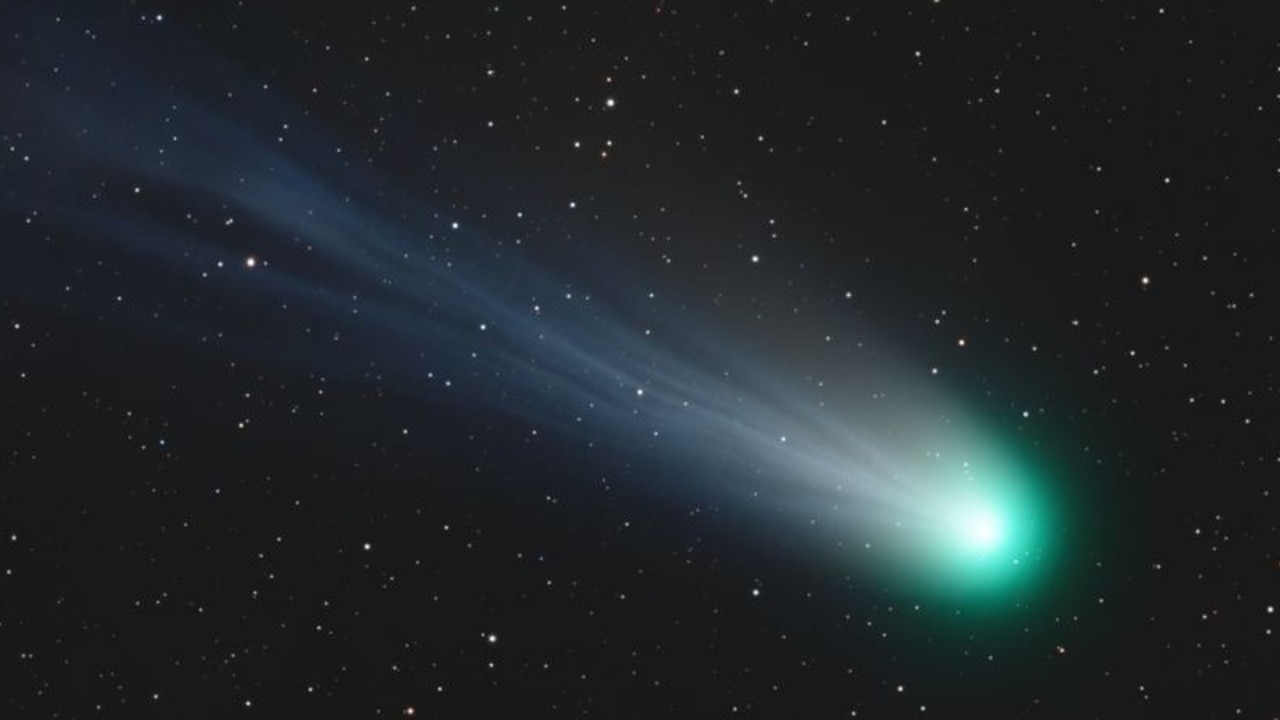Stargazers are in for a major treat this month, as the rare ‘Devil Comet’ becomes visible in Australian skies for the first time in 70 years.
NBC reports that a “devil comet” may be visible during next month’s highly anticipated North American solar eclipse. So-called “devil comets” are known for occasional explosive outbursts, which give the celestial objects their unique appearance.
The comet, which is larger than Mount Everest, will be visible to the naked eye in Australia for a short period in the early hours of April 22.
Comet 12/P Pons-Brooks, earned the nickname ‘Devil’ or ‘Mother of Dragons’ due to its horned tail.
Australian National University astrophysicist Brad Tucker told budding astronomers the best time to observe the comet will be before sunrise, when it will appear as a green, fuzzy dot.
The comet can be located in the sky by finding Venus, which burns brightest before dawn, and looking below it in a line between the sun.
The comet’s visibility and brightness will increase as it gets closer to the sun, due to the increased release of gas from its surface.
While it will be possible to see the comet with the naked eye from clear skies, using binoculars will enhance the viewing experience significantly.
Those with more advanced telescopes will have the opportunity to observe the comet over the weeks following its initial visibility as it approaches the sun before moving back into the distant parts of the solar system.
The ‘Devil Comet’ is set to be visible in Australian skies for the first time in 70 years. Picture: Jan Erik Vallestad/Institute of Physics in Opava
The comet can be located in the sky by finding Venus, which burns brightest before dawn, and looking below it in a line between the sun.
The comet’s unique horns are understood to be the result of cryo-volcanic eruptions of ice that occur as it heats up near the sun, creating visible tails of gas, dust, and ice that accompany the comet’s main tail.
It has been visible in the Northern Hemisphere since mid-March but was not observable in the Southern Hemisphere due to its position below the horizon.
“Venus is the bright star in the morning sky — if you can see where Venus is, look below, and the comet will be somewhere in that line between the sun and Venus,” Mr Tucker said via the Daily Mail.
“If you’re in a dark spot, you should be able to see it with your naked eye. But if you have a pair of binoculars, even small ones, it will make it great.
“As it gets closer to the sun, that’s when it’s going to get brighter because more gas is coming off it.”
